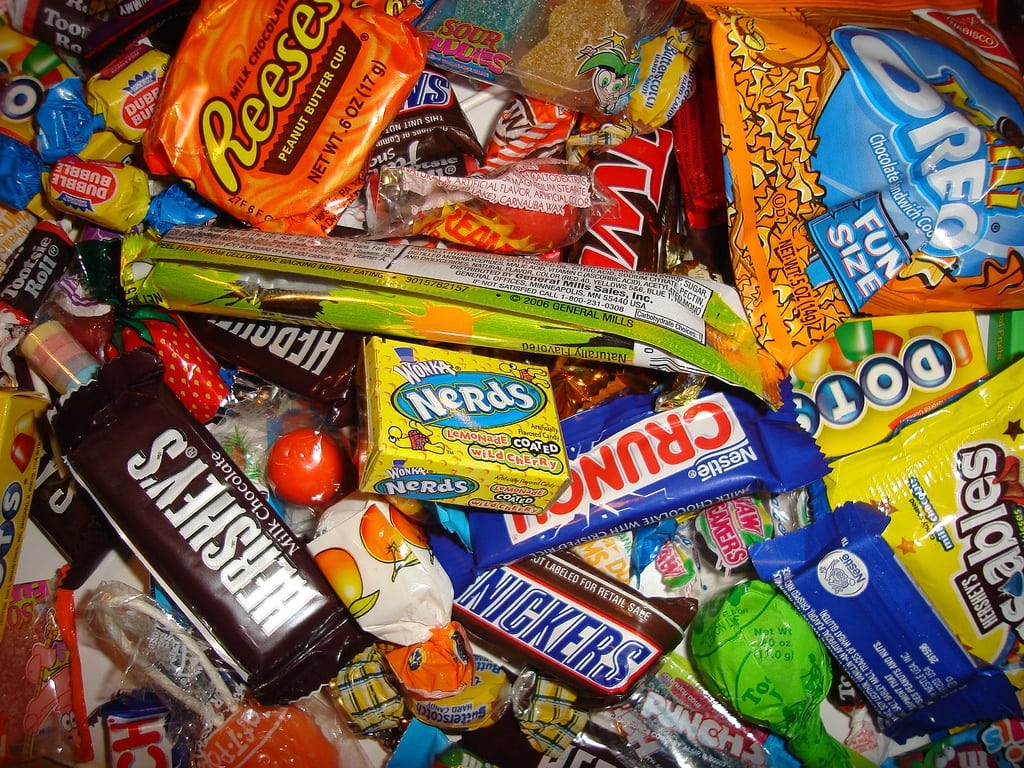What to do after the Trick-or-Treating is Over
After costumes are put away and sleepy heads hit their pillows parents are left wondering what to do with the sweet treasures their kids have collected. The over 600 million pounds of candy that Americans purchased for Halloween equates to approximately 2.4 billion dollars spent in 2012 alone.
So how can we make Halloween candy scientific? Here's a few activities using popular Halloween candy to make Trick-or-Treating fun and a great learning experience.
Dots Molecules:
Materials: Dots and toothpicks
Water (H20) is the most significant liquid on Earth and one that children are most familiar with. By following the steps below you can create a tasty, sweet model of a water molecule.
Procedure:
- Each atom in a water molecule should be a different color. example: Hydrogen= Red, Oxygen= Green
- Using two your toothpicks attach 2 Hydrogen atoms to 1 Oxygen atom.
Keep It Going: Take your Dots activity one step further by creating a C02 (Carbon Dioxide, the gas we breathe out) model.
Candy Chromatography:
Materials: coffee filter, Skittles, water, salt, tin foil, pencil, clear glass cup
Dyes give candy their bright, fun colors. Inside of candy dyes are pigments of color. Different dye colors are created using mixtures of various pigments.
Procedure:
- On a piece of tinfoil evenly space a drop of water for each Skittle color.
- Place each piece of candy on a drop of water and allow the color to dissolve. You can throw away or eat the candy after the color dissolves.
- Cut the coffee filter into a 3" x 3" square. Using a pencil (ink will run) draw a line approximately 1/2 an inch from the bottom of the filter.
- Place a dot for each Skittle color along the line (evenly spaced).
- Underneath each dot label the color (ie: R= Red)
- Using a toothpick (one for each color) transfer the dye from your tinfoil to your coffee filter. Be sure to place each color on corresponding letter. Allow the liquid to dry and repeat the process 2 more times. (You want to get as much pigment on your filter as possible)
While your colored liquids are drying you can prepare the salt water for the next step of the experiment.
- In a bowl pour one cup of water and add 1/8 tsp. of salt, mix well.
- Pour the saltwater into the cup (just enough to cover the bottom).
- Place the coffee filter in the cup of water (color marks towards the bottom but not touching the water)
You will observe the saltwater travel up the coffee filter using a capillary action. This is able to happen because the loose fibers in the coffee filter act as narrow capillary tubes. The capillary action will move the pigment along with it. Pigments will travel different distances based on their density. The dots of dye will also separate into different colors.
Keep it going: You can repeat this experiment by using water based markers, juice or anything that contains dye.


